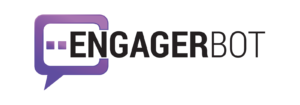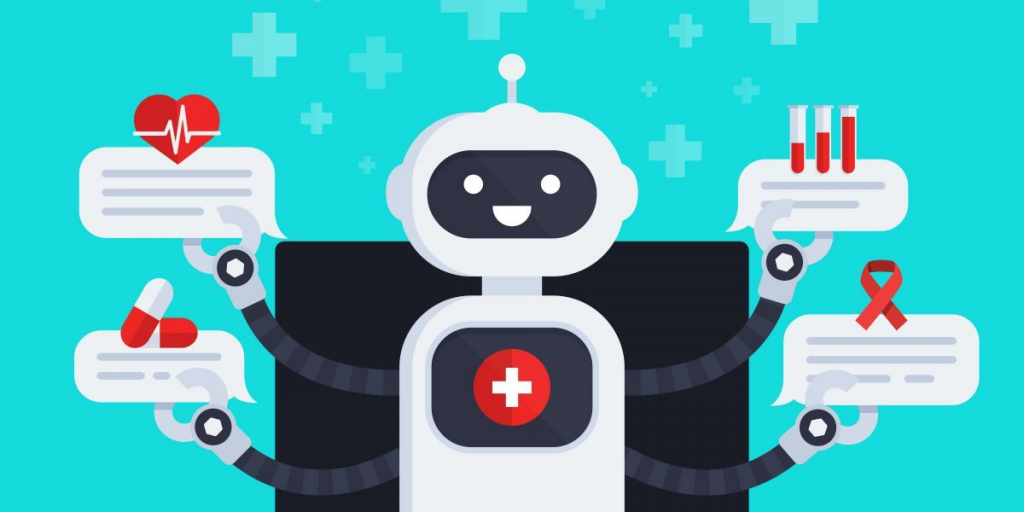1. What are Chatbots in the Healthcare Industry?
Chatbots are software developed using machine learning algorithms, including Natural Language Processing (NLP), to initiate and continue a conversation with a user to help patients in real-time.
Chatbots have already made their way into retail, news media, social media, banking, and customer service. Many people use chatbots on their smartphones every day without even knowing it. From sports news to navigating banking apps to playing conversation-based games on Facebook Messenger, chatbots are revolutionizing our lives.
Payers and healthcare providers, including medical assistants, are also beginning to use these AI-powered tools to simplify patient care and reduce unnecessary costs. Whenever a patient starts a conversation with a medical assistant who sounds human but is an intelligent conversation machine, we see a chatbot in action in the medical field.
2. The Role of Artificial Intelligence
Patients love talking to real doctors, and Artificial Intelligence makes chatbots sound more human. Some chatbots with complex self-learning algorithms can successfully hold detailed, almost human-like conversations.
Are medical chatbots powered by AI technologies leading to a significant paradigm shift in healthcare? Yes. Recently, Northwell Health, an AI company creating chatbots to help patients with cancer treatment, reported that more than 96% of patients who used its chatbots for post-discharge follow-up found them very helpful, demonstrating increased customer engagement.
Machine learning applications are transforming patient care as we know it.
Although still in their infancy, chatbots will improve care and lead to significant healthcare cost savings and better patient care outcomes soon.
3. Benefits of Chatbots in Healthcare
The pros of using hybrid chatbots in healthcare are enormous – and everyone involved benefits.
For one, medical chatbots reduce the workload of medical staff by reducing the number of hospital visits, cutting down on unnecessary treatments and procedures, and reducing hospital admissions and readmissions by improving treatment adherence and symptom knowledge. For patients, this brings many benefits:
- less time spent traveling to the doctor’s office
- less money spent on unnecessary treatments and tests
- easy access to the doctor at the touch of a button
Chatbots provide cost savings in healthcare. Experts estimate that cost savings from chatbots in healthcare will reach $3.6 billion globally by 2022.
6 billion by 2022. Chatbots gradually reduce hospital waiting times, the length of consultations, unnecessary treatments, and hospital readmissions by interacting with patients with the right healthcare providers and helping them understand their condition and treatments, even without seeing a doctor.
In addition, hospitals and private clinics are using medical chatbots to triage and record patients even before they enter the treatment room. These bots ask relevant questions about the patient’s symptoms, which are automatically answered to create a good medical history for the doctor. Then, these medical histories are sent via a messaging interface to the doctor, who triages to determine which patients require to be seen first and which patients need a short consultation.
The truth is that chatbots can neither replace a doctor’s expertise nor take over patient care. However, integrating the best of both worlds improves the efficiency of patient care and simplifies and speeds up treatment without compromising quality.
4. Use Cases of Chatbots in Healthcare
To develop a chatbot that engages users and provides them with solutions, chatbot developers need to figure out what kind of chatbot can most effectively achieve these goals. Therefore, the chatbot developer needs to consider the user’s intention and the best help the user requires; then, we can design the right chatbot to achieve these goals.
There are three prominent use cases for the use of chatbot technology in healthcare:
- Informative chatbots
- Conversational chatbots
- Prescriptive chatbots
These chatbots differ in their conversational style, depth of communication, and the type of solutions they offer.
1. Informative Chatbots
Informative chatbots provide helpful information to users, often in pop-ups, notifications, and breaking news. In general, Informative Chatbots provide automated information and customer support.
Health news and mental health websites also use chatbots to help them access more detailed information about a topic. For example, if you are reading about alcoholism and withdrawal, a chatbot may pop up with this question: “Do you need help with alcohol addiction? Talk to one of our mental health experts”.
2. Conversational Chatbots
Conversational chatbots are designed as contextual tools that provide answers based on the user’s intent. However, a conversational chatbot has different maturity levels – not all of them provide the same depth of conversation.
For example, a maturity level 1 chatbot only provides pre-written answers to clearly stated questions without tracking variations. A chatbot of intelligence level 2, on the other hand, can do this.
Chatbots with a higher intelligence level can understand the context better and provide more than just ready-made answers. This is because these chatbots look at a conversation as a whole instead of processing sentences in isolation.
The higher the intelligence of a chatbot, the more personalized responses can be expected. This is when conversations start to resemble human communications. Conversational Chatbots utilize Natural Language Processing (NLP) and Natural Language Understanding (NLU), Artificial Intelligence applications that enable machines to understand human speech and intentions.
3. Prescriptive Chatbots
Prescriptive chatbots are conversational by design, and they are developed to provide answers or instructions and offer therapeutic solutions.
Chatbot developers should use a variety of chatbots to engage and provide value to their audience. The most important point is knowing your audience, what suits them best, and which chatbots work in which environment.
If you are developing a chatbot to give medical advice, you should look in-depth at the applicable regulations. There are points you can and cannot say, and there are rules about saying things. To navigate this environment, you need legal counsel to help you build this part of your chatbot.
5. Future of Chatbots in Healthcare
Despite the initial chatbot hype, medical chatbots still have the potential to improve the healthcare industry. The three main areas that can be particularly useful include diagnostics, patient engagement outside of medical settings, and mental health.
At least, that’s what the analysts at CB Insights put forward in their Healthcare Chatbot market study and generally say that the future of chatbots in the healthcare industry looks bright.
Have you checked out our Healthcare Chatbot?
It helps ensure your website is in tip-top shape. Check it out now here: Healthcare Chatbot

